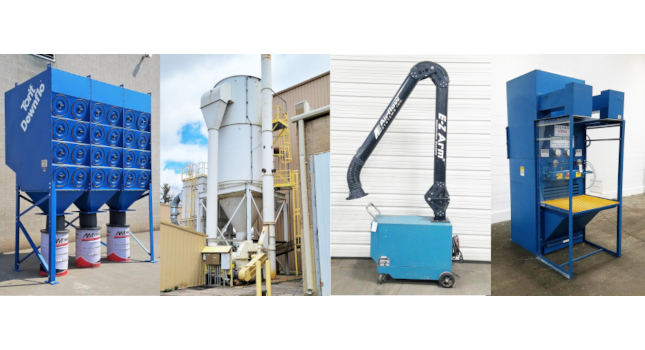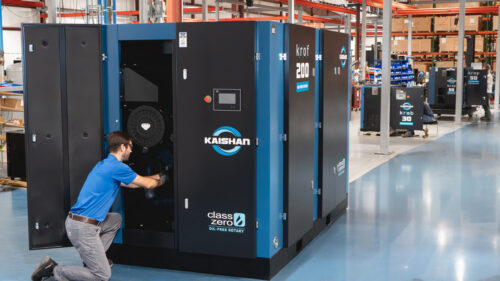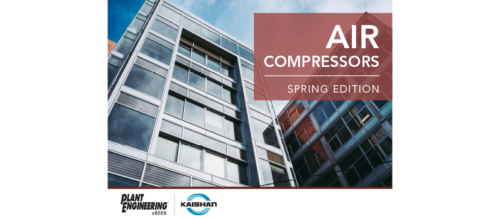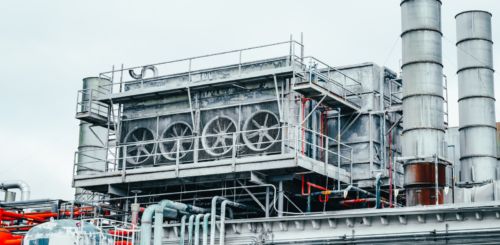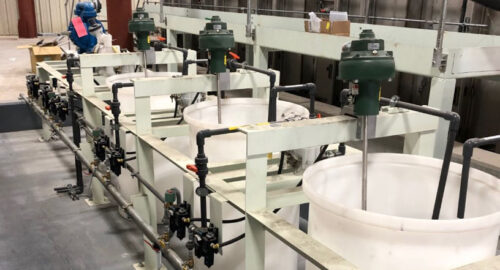How to select a dust collection system
For most industrial and manufacturing facilities, having reliable dust collectors is critical to the operational efficiency and employee health
To determine which dust collection system is the best choice for a given application, consider the applications, pros and cons of cartridge dust collectors, baghouse dust collectors, fume and smoke collectors and downdraft tables and benches.
Cartridge dust collectors
Industrial cartridge dust collectors use cartridge filters made of pleated nonwoven filter media, typically in a cylindrical or oval shape, to capture dust, smoke and fumes on their surface. The filter media is a blend of polyester and cellulose, additionally a nanofiber coating could be added for increased filtration efficiency for very fine particulates or a spunbond coating for improved durability under some challenging conditions. Less common materials include a nonstick coating and oil- and water-resistant coatings. Cartridge dust collectors are cleaned through a pulse-jet method in which pulses of compressed air travel through the filters to dislodge collected dust and cause it to fall into the hopper below.
Common cartridge dust collector applications include metalworking and welding, sandblasting, Pharmaceutical manufacturing, Bulk powder processing, Rubber plants, Plasma and laser cutting, Fiberglass processing and Agricultural feed production.
Cartridge dust collector advantages
Compact size. Because pleated cartridge filters have a high filtering surface area, cartridge dust collectors have a low air-to-cloth ratio that reduces the size of the unit. For this reason, cartridge dust collectors are ideal for indoor, small-space operations.
Highly efficient at collecting fine dust. Cartridge dust collectors specialize in filtering out very fine particulates, with efficiencies reaching as high as 99.97% at 0.3 microns and a MERV 16 rating.
Versatile applications. Since cartridge filters can hold several different media types, a cartridge dust collector can be used in a variety of applications with a few simple cartridge changes.
Long filter life. The pulse-jet cartridge filter cleaning method enables them to keep working efficiently for several months up to a year or longer depending on the application.
Low maintenance. Cartridge filters are easy to access and can be replaced from the outside of the dust collector, minimizing physical contact with the collected dust and reducing downtime for filter changes. Since the filters last a long time, they don’t need to be changed frequently.
Low cost and lead time. Since cartridge dust collectors come prefabricated and typically don’t need to be custom-built due to their naturally compact size, they cost less than some other dust collectors and can be delivered more quickly.
Cartridge dust collector disadvantages
Not ideal for heavy dust loading. Cartridge dust collectors perform best in environments with low dust loading (less than one 55-gallon drum per shift).
Not ideal for abrasive applications. Cartridge dust collectors are designed to filter light and fine dust particles. Larger particles from paper scraps, sawdust, pulp, pebbles and the like can clog and damage cartridge filters.
Not ideal for high-temperature applications. High temperatures combined with low moisture levels cause dust particles from metallic salts and similar materials to repel one another. This prevents the particles from clumping together on the filter media and then migrating into the hopper, meaning that the particles continue to redeposit themselves on the filter media.
Not ideal for high-moisture applications. Although some cartridge filters can be made with oil- and water-resistant materials, cartridge dust collectors are generally not a good fit for applications involving foundry sand, oil, mist and other moist materials. Moisture combined with collected particles creates a sticky sludge that blocks airflow and is nearly impossible to remove through the pulse-jet cleaning process.
Baghouse dust collectors
Baghouse dust collectors are the most widely used style of industrial dust collectors and tend to be larger than other dust collection systems. They are well suited for high-volume, heavy dust loading applications and high temperatures. Baghouse dust collectors use cylindrical fabric filter bags to capture dust particles from the air. The three types of baghouses are reverse air baghouses, shaker baghouses and pulse jet baghouses.
- Reverse air baghouses: A compartmentalized design allows personnel to clean individual sections of the baghouse without taking the entire system offline. They can handle high temperatures and the gentle cleaning method lengthens bag filter life.
- Shaker baghouses: The system mechanically shakes the dust out of the bag filters, which is simple to operate and less expensive, but cleaning must be performed while the system is shut down and they cannot handle high temperatures.
- Pulse jet baghouses: The self-cleaning filtration process pulses compressed air to clean the bags and can be performed while the system is online. However, with pulse jet baghouses, caution should be taken under high-moisture or high-temperature conditions.
Applications for baghouse dust collectors include lumber milling, woodworking, automotive manufacturing, mining, cement manufacturing, steel foundries, smelting, lime kilns and glass and ceramic manufacturing.
Baghouse dust collector advantages
Ideal for heavy dust loading. Baghouse dust collectors are best suited for use in industrial and manufacturing settings that require a high volume of material to be filtered on a regular basis.
Can be configured to withstand high temperatures. In some cases, maximum operating temperatures are 250°F and up to 500°F.
Filters larger particles. Baghouse dust collectors can be configured to effectively filter medium- to large-size particles that are at least 5 microns.
Can be configured to handle abrasive and sticky materials. Baghouse filters come in several materials that are resistant to mineral acids and alkalis and can filter out abrasive materials like wood and grain dust. Bag filters are also much better suited for the release of adhesive particulates than a cartridge filter.
Durable filters. Because they are designed to withstand harsh conditions, baghouse filters typically have a longer service life than cartridges, which reduces filter replacement frequency.
Baghouse dust collector disadvantages
Higher cost. Because baghouse dust collector units are large and often need to be customized, their initial investment is high.
Require large amounts of space. Some industrial baghouse dust collectors have a large footprint. For this reason, baghouse dust collectors are often housed outdoors or inside a large facility that has ample space.
High maintenance. For shaker and reverse air baghouses, personnel must enter the unit to replace bags, which requires the machines to be offline, and it can expose personnel to toxic dust. In addition, reverse air baghouse filters need to be cleaned frequently and residual dust buildup is difficult to remove.
High air-to-cloth ratio. Reverse air and shaker baghouse filters have a higher air-to-cloth ratio than cartridge filters. This is because there is less media per filter.

Figure 1: Shown from left to right: cartridge dust collector, baghouse dust collector, fume/smoke (portable) collector and downdraft table. Courtesy: AM Industrial Group, LLC
Fume and smoke collectors
Fume and smoke collectors — also called fume extractors — capture and filter ambient dust, fumes and weld smoke in an operation where limited space is available. The two types of fume extractors are ceiling-hung and portable.
- Ceiling-hung fume and smoke collectors are fixed systems that save floor space, return filtered air to the work area to eliminate heat loss in winter and do not require building penetration for external venting. Ceiling-hung systems include wall-mounted or sliding articulated arms and hoods.
- Portable fume extractors are an effective source-capture technology for extracting weld fumes directly at the source. These mobile systems are well-suited for small facilities that cannot afford or fit a large, complex system. Portable fume extractors can also easily travel between workstations.
Applications for fume extractors include welding, fabrication, brazing, thermal spray and metal cutting.
Fume and smoke collector advantages
Units are compact. Portable and ceiling-hung fume extractors take up little or no floor space.
Portable. Since portable fume extractors don’t rely on a facility’s exhaust system, they can easily be moved between workstations as needed. They can be placed on a tabletop or mounted on a stand with casters.
Efficient source/capture system. Source/capture technology captures contaminants before they reach the workers’ breathing zone or valuable parts of machinery.
Low installation cost. Since fume and smoke collectors are compact and do not require building penetration for external venting, they are less expensive to install than other types of dust collectors.
Energy savings. Fume collector systems recirculate filtered air within the facility, preventing heat loss and the development of negative air pressure inside.
Fume and smoke collector disadvantages
High maintenance. Depending on the application, the filters of portable fume extractors with fume hoods must be replaced regularly. The person changing the filter must also check all components of the system for best performance.
Less powerful. Portable fume collectors filter less air than larger systems and are not suitable for a heavy fume load.
Downdraft tables and benches
Downdraft dust collection tables and benches provide a ventilated work surface where dust, fumes and smoke are collected at the source. The flat, elevated work surface has a perforated grate where particulates are captured by the built-in vacuum system below. Dirty air is typically filtered through cartridge filters and the particulates are collected into removable dust drawers.
Applications for downdraft tables and benches include welding; plasma cutting; sanding; grinding; buffing, finishing, and polishing; woodworking; paint fumes; pharmaceuticals; and composite and plastic fabrication.
Downdraft table and bench advantages
Efficient source/capture system. Source/capture technology captures contaminants before they reach the workers’ breathing zone or valuable parts of machinery.
Ideal for isolated areas. Downdraft dust collection systems provide self-contained filtration for small, dusty work areas within a larger facility.
Energy savings. Downdraft dust collector systems recirculate filtered air within the facility, preventing heat loss and the development of negative air pressure inside.
Low maintenance. Downdraft cartridge filters are usually cleaned through an automated pulse-jet process and particulates are collected in removable easy to access dust drawers.
Ergonomic. Some downdraft tables and benches can be raised or lowered, so workers can adjust the height of their workspace to accommodate different size components
Versatile applications. Downdraft tables and benches can be designed to filter metalworking fumes, smoke, wet dust, powders and ultrafine particles.
Customizable. Downdraft systems are available in stationary and portable configurations and can be customized without having to retrofit an integrated dust collection system.
Downdraft table and bench disadvantages
Not suitable for large or heavy assemblies. Downdraft dust collectors are only designed for working on small- to medium-sized components.
Work deck requires a high constant velocity. To prevent contaminated air from being circulated into the worker’s breathing zone, the force of air movement into the downdraft deck must be high enough to fully contain the processed dust.
CFM ratings can be misleading. High CFMs do not guarantee adequate air velocity at the work deck. The measurement that matters most for downdraft systems is feet per minute (FPM), which measures the velocity of air movement. This will determine whether the bench is pulling air with enough force to protect the worker from dust and fumes.
Capture velocity depends on proximity. The farther the dust collection process is from the downdraft work deck, the lower the capture velocity will be.
ONLINE extra
Learn more about AM Industrial Group, LLC.
Do you have experience and expertise with the topics mentioned in this content? You should consider contributing to our CFE Media editorial team and getting the recognition you and your company deserve. Click here to start this process.

